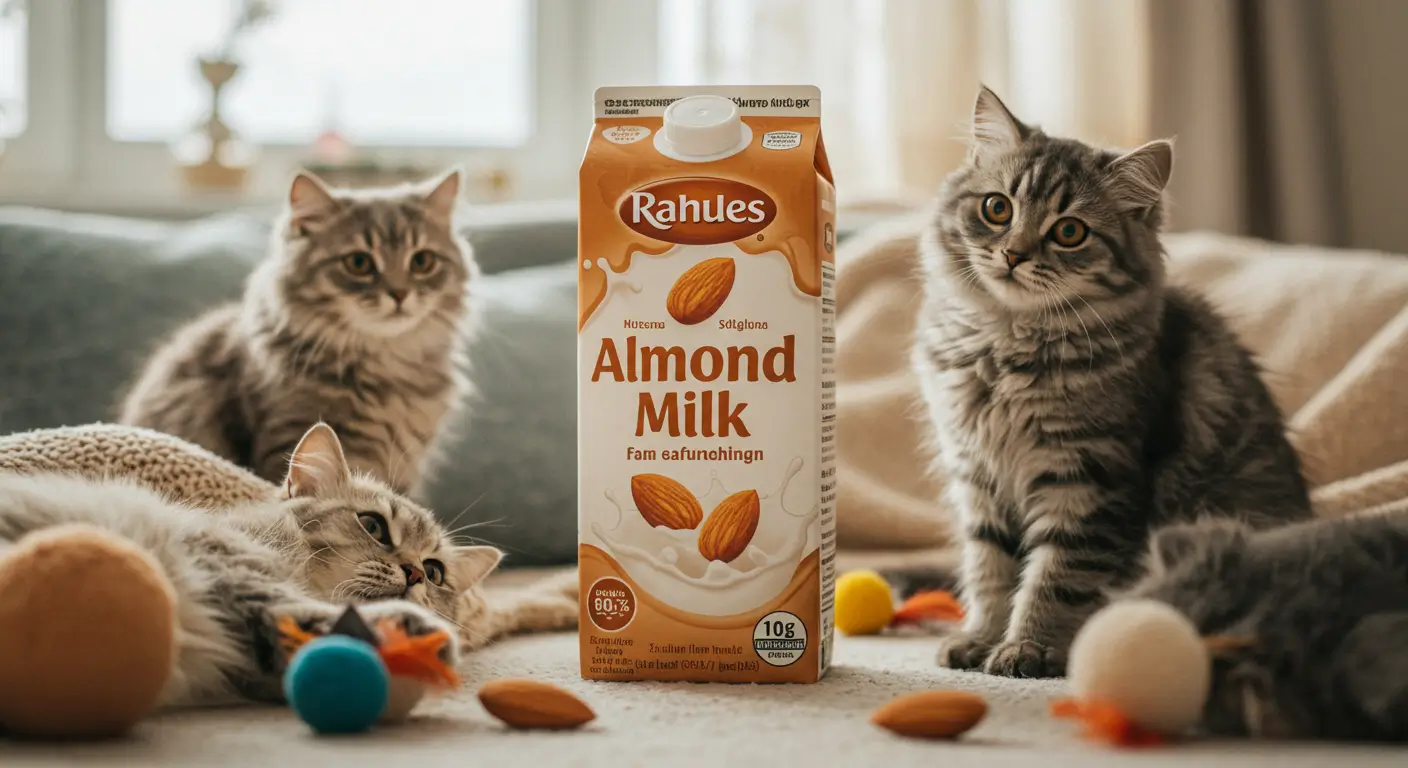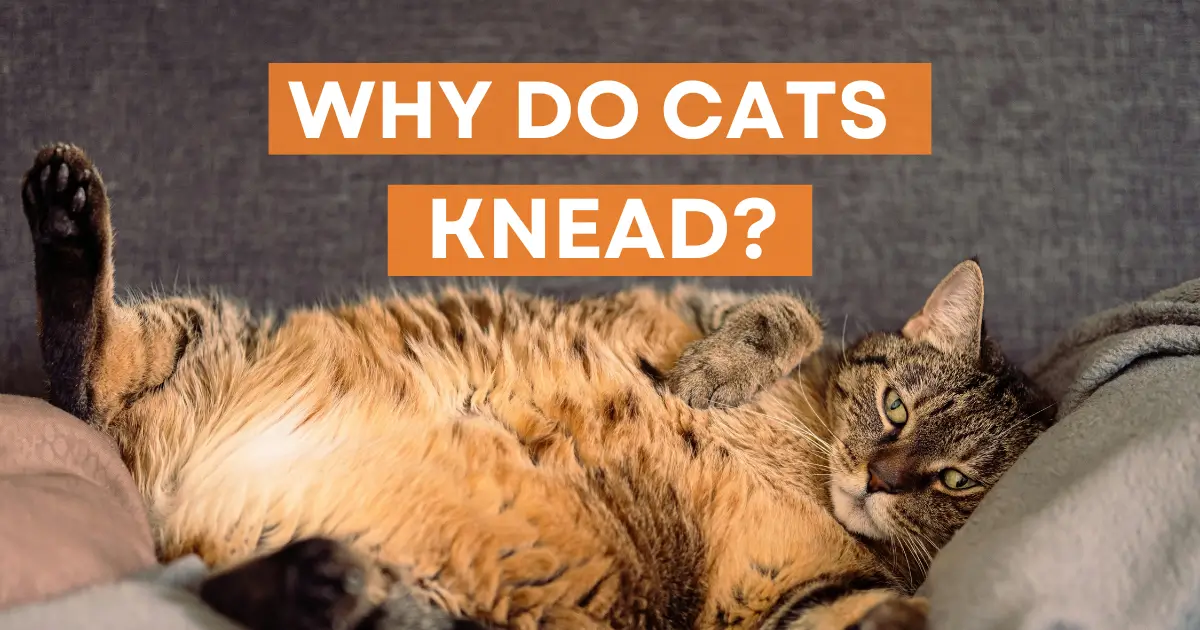How Long Do Cats Live? A Comprehensive Guide to Feline Lifespan
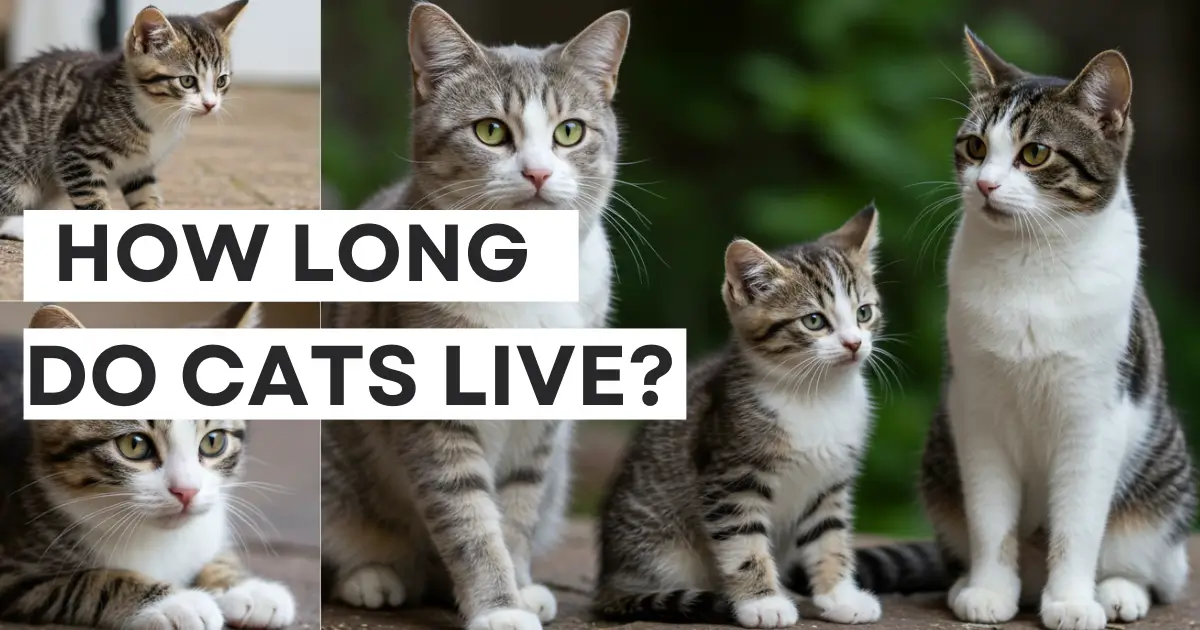
Introduction
Cats have been cherished companions for centuries, captivating us with their grace, independence, and unique personalities. As cat owners and enthusiasts, one question often lingers in our minds: “How long do cats live?” Understanding a cat’s lifespan isn’t just a matter of curiosity—it’s a crucial aspect of ensuring they lead long, healthy, and happy lives.
The lifespan of a cat can vary widely depending on several factors, including their breed, environment, and overall health. While some cats enjoy remarkably long lives, others may face challenges that impact their longevity. In this comprehensive guide, we’ll delve into the average lifespan of cats, explore how factors like care and lifestyle influence their years, and provide tips to help your feline friend thrive.
Whether you’re a seasoned cat parent or considering bringing a furry friend into your life, this guide is designed to equip you with the knowledge to support your cat at every stage of their life. From understanding the differences between indoor and outdoor cats to identifying the needs of aging felines, you’ll find valuable insights to enhance your bond with your beloved companion.
Let’s uncover the secrets to a longer and healthier life for your cat!
- Introduction
- Understanding the Average Lifespan of Cats
- Cat Breeds and Their Lifespans
- Tips for Extending Your Cat's Lifespan
- Identifying the Signs of Aging in Cats and Tips for Caring for Senior Cats
- Debunking Myths About Cat Lifespan
Understanding the Average Lifespan of Cats
Indoor vs. Outdoor Cats
Comparison of Indoor and Outdoor Cat Lifespans
Indoor and outdoor cats experience vastly different lifespans due to the environments in which they live.
- Indoor Cats: How Long Do Cats Live? With an average lifespan of 12 to 18 years, indoor cats generally live much longer due to the safety and care they receive. Protected from external dangers, these cats enjoy controlled access to food, water, and shelter. In fact, many indoor cats can even reach their 20s with proper care, demonstrating just how long cats can live when given the best living conditions.
- Outdoor Cats: Outdoor cats, on the other hand, have a significantly shorter lifespan, averaging 2 to 5 years. This reduction is primarily due to the multitude of risks they face in an uncontrolled environment.
Risks Faced by Outdoor Cats
- Predators: Outdoor cats are at risk of attacks from animals such as dogs, coyotes, and birds of prey.
- Accidents: Busy roads and vehicles pose a constant threat to cats roaming outdoors.
- Diseases: Outdoor cats are more likely to contract diseases like feline leukemia virus (FeLV), feline immunodeficiency virus (FIV), and upper respiratory infections due to contact with other animals.
- Parasites: Exposure to fleas, ticks, and intestinal worms is far greater for outdoor cats.
- Harsh Weather: Extreme temperatures and weather conditions can lead to hypothermia, heatstroke, or dehydration.
While outdoor life provides more natural experiences for cats, these risks significantly impact their overall lifespan and quality of life.
Domestic Cats vs. Wild Cats
Lifespan Differences Between Domestic and Feral Cats
- Domestic Cats: These cats live in homes or as pets and typically enjoy long lives, averaging 12 to 18 years, with some surpassing 20 years. Their lifespan is largely due to the care provided by their owners, including proper nutrition and medical attention.
- Feral Cats: Feral cats, or wild cats living without human care, have much shorter lifespans, often averaging only 2 to 5 years. Their lives are fraught with the same dangers faced by outdoor cats but without any protection or veterinary care.
Role of Environment and Care
- Environment: Domestic cats benefit from safe indoor environments that protect them from predators, diseases, and extreme weather. In contrast, feral cats must fend for themselves, often leading to malnutrition or injury.
- Care: Regular feeding, vaccinations, and veterinary visits drastically improve a domestic cat’s health and longevity. Feral cats, on the other hand, lack access to these essentials, making them more vulnerable to illness and injury.
By ensuring proper care and creating a safe environment, domestic cats can lead far healthier and longer lives compared to their feral counterparts.
Factors That Influence Cat Lifespan
Genetics and Breed
- Different breeds have varying genetic predispositions to longevity or certain health issues. For instance, Siamese and Burmese cats are known for their long lifespans, while some breeds, like Bengals, may be prone to specific genetic conditions.
Lifestyle
- Active cats that maintain a healthy weight and engage in regular play tend to have fewer health issues. Conversely, sedentary or obese cats are at higher risk for diseases like diabetes and arthritis.
Diet
- A balanced diet tailored to a cat’s age, weight, and health needs is critical. High-quality cat food, rich in essential nutrients, supports overall health and can extend lifespan. Proper hydration is equally important.
Importance of Regular Veterinary Check-Ups
- Routine check-ups help identify and treat potential health issues before they become serious.
- Vaccinations protect cats from common diseases, and dental care prevents oral infections that can affect overall health.
- Early diagnosis of chronic conditions, such as kidney disease or hyperthyroidism, allows for better management and improved quality of life.
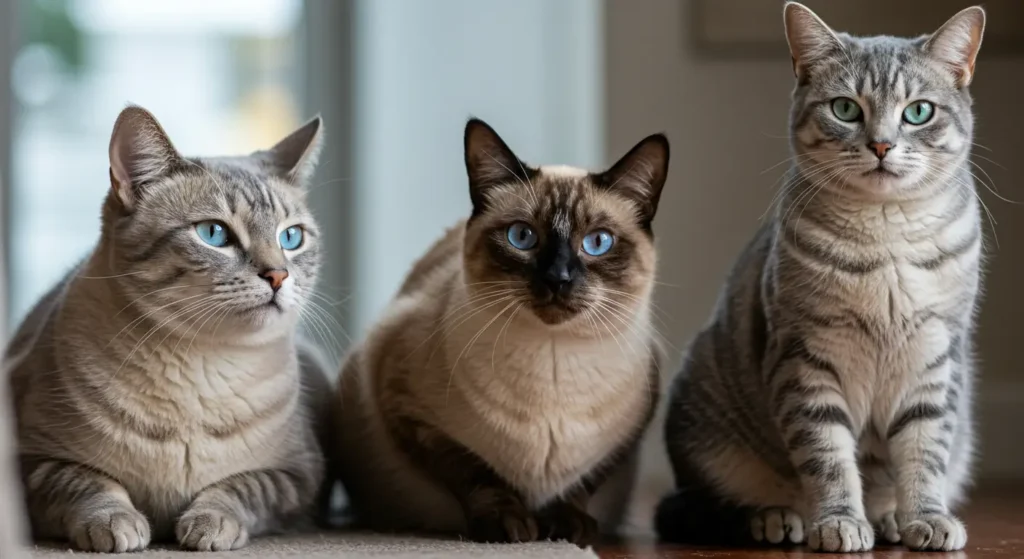
Cat Breeds and Their Lifespans
The lifespan of a cat is not only influenced by its environment and care but also by its breed. Genetics play a significant role in determining how long a cat might live, with some breeds known for their longevity and others prone to shorter lifespans due to hereditary health issues.
Breeds with Long Lifespans
Certain cat breeds are renowned for their ability to live long, healthy lives, often surpassing the average feline lifespan.
- Siamese Cats
- Siamese cats are one of the longest-living breeds, often reaching 15 to 20 years or more with proper care.
- They are generally healthy cats, though they may occasionally experience dental issues or respiratory problems.
- Burmese Cats
- Burmese cats frequently live into their late teens or early twenties.
- Their sturdy build and low predisposition to genetic diseases contribute to their extended lifespans.
- Maine Coon Cats
- Known as gentle giants, Maine Coons have an average lifespan of 12 to 15 years but can live longer with excellent care.
- Their robust health and adaptability make them one of the hardiest breeds, though they may be prone to hip dysplasia or heart disease (HCM).
What Makes These Breeds Live Longer?
- Genetic Robustness: Breeds like the Burmese and Siamese are naturally less susceptible to life-threatening genetic conditions.
- Stable Temperaments: Their calm and adaptable personalities may contribute to lower stress levels, which positively affect overall health.
- Owner Awareness: Popular long-living breeds often receive excellent care due to their desirability and the knowledge owners have about maintaining their health.
Shorter-Lived Breeds
While all cats are unique, some breeds are genetically predisposed to conditions that can shorten their lifespans.
- Bengal Cats
- Bengals typically live 10 to 16 years, though they are prone to heart disease (HCM) and kidney-related conditions, which can reduce longevity.
- Their active lifestyles and high energy needs may also lead to accidents or injuries in less cat-proofed environments.
- Abyssinian Cats
- Abyssinians often live 9 to 15 years but are susceptible to hereditary diseases such as amyloidosis, which affects the kidneys.
- Their slender build and active nature make them prone to stress-related health issues if their environment is not stimulating.
Genetic Predispositions to Health Issues:
- Specific breeds carry genes that increase the likelihood of certain health problems. For example, Bengals are more likely to develop progressive retinal atrophy (PRA), leading to blindness, while Abyssinians are at risk for dental and kidney diseases.
- Awareness of these predispositions allows owners to take preventative steps, such as specialized diets and frequent veterinary screenings.
Famous Long-Living Cats
Throughout history, some cats have shattered expectations, living extraordinary lives that inspire cat owners worldwide.
- Crème Puff
- Crème Puff holds the Guinness World Record for the longest-living cat, having lived an astonishing 38 years and 3 days.
- This cat’s longevity was attributed to a combination of exceptional care, a unique diet, and a safe, loving environment.
- Other Noteworthy Cats
- Cats like Lucy, a tabby from the UK, reportedly lived to 39 years, while other long-living felines often exceed the two-decade mark.
- Their stories underscore the importance of attentive care, a stress-free environment, and genetic luck.
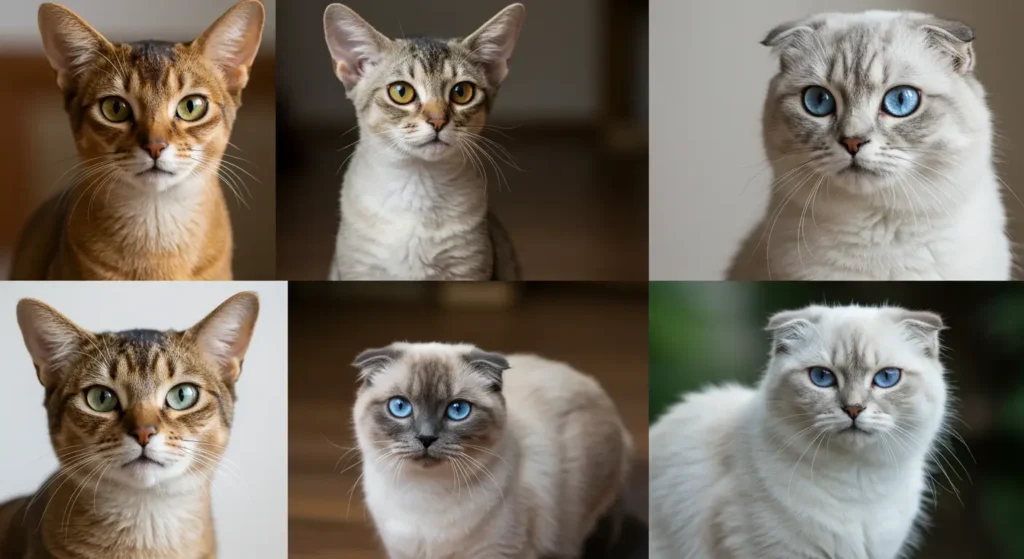
Tips for Extending Your Cat’s Lifespan
How Long Do Cats Live? While cats may have nine lives in folklore, their actual longevity largely depends on the care and environment provided by their owners. By addressing key areas like nutrition, health care, safety, and stimulation, you can significantly enhance your cat’s quality of life and extend their years, ultimately influencing how long cats live.
Providing Proper Nutrition
A well-balanced diet is the foundation of a healthy and long life for your cat.
- Balanced Diet Tailored to Your Cat’s Needs:
- How Long Do Cats Live? Cats are obligate carnivores, requiring a diet rich in high-quality animal protein and essential nutrients such as taurine, fatty acids, and vitamins to live a long and healthy life. Life stage matters when considering how long cats live: Kittens, adults, and senior cats have different dietary needs. Kittens need nutrient-dense food for growth, while senior cats benefit from diets tailored to aging, such as those promoting joint health or kidney function. To ensure your cat lives a long, healthy life, consult your veterinarian to select a diet that suits their specific needs, especially if they have health conditions like obesity or food sensitivities.
- Importance of Hydration:
- Proper hydration is crucial for preventing urinary and kidney issues, common health problems in cats.
- Encourage water consumption by providing fresh water daily and using a pet water fountain, which many cats find appealing.
- Wet food can also supplement hydration, as it contains more moisture than dry kibble.
Regular Veterinary Care
Consistent and proactive veterinary care is one of the most effective ways to extend your cat’s life.
- Vaccinations, Dental Care, and Routine Health Checks:
- Vaccinations protect your cat from serious illnesses such as rabies, feline leukemia, and respiratory infections.
- Regular dental care prevents periodontal disease, which can lead to infections affecting vital organs. Provide dental treats, or brush your cat’s teeth if possible.
- Routine check-ups help monitor your cat’s overall health and detect potential issues early.
- Early Detection of Common Diseases:
- Chronic conditions like diabetes, kidney disease, and hyperthyroidism are more manageable when diagnosed early.
- Regular bloodwork and urinalysis can identify health issues before symptoms become severe, allowing for timely intervention.
Creating a Safe Environment
A safe and secure environment shields your cat from unnecessary risks, enhancing their longevity.
- Keeping Cats Indoors or in Secure Outdoor Enclosures:
- Indoor cats live longer because they are protected from dangers like predators, busy roads, and exposure to contagious diseases.
- If you want your cat to enjoy the outdoors, consider building or investing in a secure cat enclosure (catio) to let them safely explore the outside world.
- Minimizing Exposure to Hazards:
- Remove toxic plants, household chemicals, and small objects your cat might ingest from their environment.
- Secure windows, balconies, and other high places to prevent accidental falls.
Mental and Physical Stimulation
Engaging your cat’s mind and body helps prevent boredom, reduces stress, and keeps them physically fit.
- Importance of Play:
- Daily play sessions mimic hunting behaviors, keeping your cat mentally stimulated and physically active. Use toys like feather wands, laser pointers, or balls to encourage movement.
- Interactive toys that challenge your cat, such as puzzle feeders, provide both entertainment and mental stimulation.
- Toys and Interaction for a Healthy Mind:
- Provide a variety of toys to prevent boredom. Rotate them regularly to maintain your cat’s interest.
- Spend quality time with your cat to strengthen your bond and reduce feelings of loneliness or anxiety.
- Exercise Opportunities:
- Install cat trees, shelves, or climbing towers to encourage natural behaviors like climbing and jumping.
- Consider leash training for supervised outdoor walks, offering both exercise and enrichment.
Identifying the Signs of Aging in Cats and Tips for Caring for Senior Cats
As cats age, they go through various physical and behavioral changes. Recognizing the signs of aging can help ensure that your feline companion receives the proper care and attention they need to live a comfortable and happy life.
Physical Changes in Aging Cats
As your cat matures, certain physical changes may become apparent. These signs might not always be obvious at first, but paying attention can help you catch potential issues early.How Long Do Cats Live?
- Reduced Mobility: Older cats may experience joint pain, stiffness, or reduced energy, which can affect their ability to jump, climb, or even move around comfortably. Arthritis is common in senior cats and can result in lameness or limping. You may notice your cat taking longer to move from one spot to another or avoiding stairs and high places, all of which can impact how long cats live comfortably.
- Weight Loss: As cats age, they often lose weight, especially if they develop underlying health conditions like hyperthyroidism, diabetes, or kidney disease. A decrease in appetite or difficulty eating can also contribute to weight loss. It’s crucial to monitor their eating habits and ensure they consume enough calories to maintain a healthy weight, ultimately supporting how long cats live.
- Dull Coat: An aging cat’s fur may become less shiny or start to thin. While this can be a natural part of aging, it could also indicate nutritional deficiencies, dental issues, or underlying health problems. Regular grooming can help maintain their coat and contribute to their overall well-being, impacting how long cats live.
- Changes in Vision and Hearing: Just like humans, cats may experience a decline in their senses as they age. They might become less responsive to sounds or have difficulty seeing in low light. If your cat struggles to navigate familiar environments, it could be a sign of sensory decline, which may influence their quality of life and how long cats live.
Common Age-Related Health Issues
As cats grow older, they are more likely to develop certain health conditions. Early detection and veterinary care can help manage these issues and improve your cat’s quality of life.
- Arthritis: Joint pain and stiffness are common in older cats, and arthritis can be a major source of discomfort. This condition often results in reduced mobility, reluctance to jump, and difficulty grooming themselves. Regular vet visits, pain management, and providing soft bedding can help.
- Hyperthyroidism: Hyperthyroidism is a common hormonal disorder in senior cats, often resulting in symptoms like weight loss despite a good appetite, increased thirst, and hyperactivity. If left untreated, it can lead to severe health problems, so it’s important to have your cat regularly checked by a vet.
- Kidney Disease: Chronic kidney disease (CKD) is another condition that affects many senior cats. Symptoms include increased thirst, urination, weight loss, and vomiting. While it can’t be cured, managing CKD through diet, medications, and regular monitoring can help prolong your cat’s life.
- Dental Disease: As cats age, they may develop dental problems, including gingivitis, periodontal disease, or tooth decay. These problems can lead to discomfort, trouble eating, and unpleasant breath. Regular dental check-ups and cleanings, along with providing dental treats or toys, can help prevent severe dental issues.
Dietary Needs for Senior Cats
As cats age, their nutritional requirements change. Providing a diet that supports their health and helps manage any age-related conditions is essential.
- Adjusting Their Diet: Senior cats often need fewer calories than younger cats, but their food should be nutrient-dense to meet their specific needs. Look for food that contains high-quality protein, is easily digestible, and provides essential vitamins and minerals. Cats with conditions like kidney disease may require special diets that limit certain nutrients like phosphorus and sodium.
- Role of Supplements: Supplements can be beneficial in supporting the overall health of senior cats. Omega-3 fatty acids, glucosamine, and chondroitin can help support joint health, while antioxidants may help boost their immune system. Before introducing supplements, consult your vet to ensure they are appropriate for your cat’s individual needs.
Comfort and Lifestyle Adjustments
Making a few lifestyle adjustments can greatly improve the comfort and well-being of a senior cat, helping them to adjust to their changing physical condition.
- Providing a Comfortable Resting Place: Older cats may need more sleep and a soft, warm resting place to help them rest comfortably. Consider providing cozy, low-entry beds in areas where your cat spends a lot of time. You may also want to place a heating pad under their bedding for additional warmth, especially if they are dealing with arthritis.
- Making Adjustments to Accommodate Reduced Activity: Senior cats may not be as active as they once were, but that doesn’t mean they don’t still enjoy playtime or mental stimulation. Provide them with easy-to-access toys and interactive play options, such as puzzle feeders or low-energy games. If they have trouble reaching high spots, consider lowering their food and water bowls, or using ramps to help them access elevated areas.
- Litter Box Accessibility: As mobility decreases, senior cats may have trouble getting in and out of a traditional litter box. Consider using a low-sided box to make it easier for them to enter and exit, and ensure the box is located in a quiet, accessible area.
Debunking Myths About Cat Lifespan
There are several common myths about cat lifespan that often lead to misconceptions about how to care for our feline companions. Understanding the truth behind these myths can help ensure that cats live longer, healthier lives. Let’s explore some of the most popular myths and provide a clearer understanding.
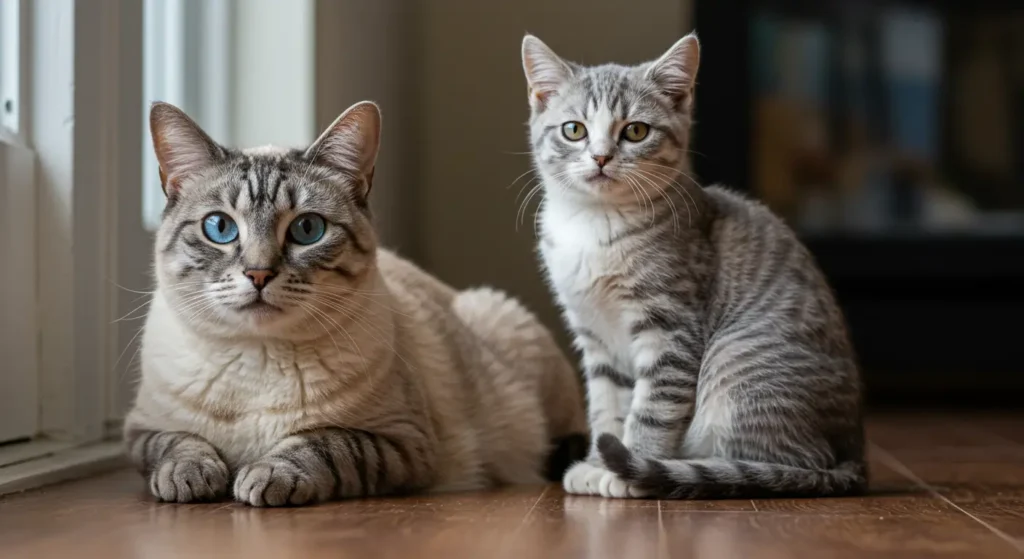
“All Cats Live for 15 Years”
It’s a common belief that cats typically live to be about 15 years old, but in reality, a cat’s lifespan can vary significantly depending on a number of factors, such as breed, genetics, and lifestyle.
- Breed Variations: Just like with people, genetics play a significant role in determining how long a cat can live. Some breeds are known for having longer lifespans, while others are more prone to genetic health issues. For example, domestic cats, particularly mixed-breed or “moggie” cats, often live longer than purebred cats due to the lower risk of inherited health conditions. On average, a domestic cat can live between 12-16 years, but some cats may live well into their 20s.
- Long-Lived Breeds: Certain breeds are known for their long lifespans. For example, Siamese cats and Maine Coons often live well past 15 years, with some reaching 20 or more years. In contrast, breeds like the Persian and Sphynx may have slightly shorter lifespans due to their predisposition to certain health conditions like heart disease or kidney issues.
- Lifestyle Impact: A cat’s lifestyle also plays a critical role in determining its lifespan. Indoor cats generally live longer than outdoor cats because they are less exposed to risks like accidents, predators, and diseases. In fact, the average lifespan of an indoor cat is often 12-16 years, while outdoor cats may live only 5-7 years on average due to the dangers of their environment.
“Outdoor Cats Are Healthier”
This myth often arises from the assumption that outdoor cats are more active and exposed to a wider range of natural stimuli, leading to a healthier and more robust life. However, the truth is quite the opposite.
- Health Risks for Outdoor Cats: Outdoor cats face a variety of risks that can seriously shorten their lives. These include:
- Accidents and Injuries: Cats who roam outside are more likely to get hit by cars, attacked by other animals, or fall victim to human cruelty. Common injuries include broken bones, cuts, and abrasions, which can be life-threatening if not treated promptly.
- Exposure to Diseases: Outdoor cats are at higher risk of contracting infections like feline leukemia virus (FeLV), feline immunodeficiency virus (FIV), and parasites such as fleas, ticks, and worms. These health threats can be deadly if not addressed, and they are significantly less likely to affect indoor cats who have less exposure to these dangers.
- Predator Threats: Outdoor cats, particularly in rural areas, are at risk of being hunted by larger predators like coyotes, hawks, and even dogs. These threats can lead to severe injuries or death.
- Indoor Cats are Safer and Healthier: Indoor cats generally experience fewer risks to their health and safety. They live in a controlled environment where they are less likely to encounter dangerous situations. Additionally, indoor cats are more likely to have regular veterinary check-ups and are less exposed to diseases. With proper enrichment, indoor cats can lead a fulfilling, healthy life and live significantly longer than outdoor cats.
- The Case for Controlled Outdoor Access: While outdoor access is generally not recommended, some cat owners opt for “catios” or enclosed outdoor spaces where their cats can safely experience the outdoors without the dangers associated with free-roaming. This offers a middle ground that can provide some of the benefits of outdoor exploration while minimizing risks.
“Cats Don’t Need Regular Check-Ups”
Many people believe that cats, being independent animals, don’t require regular check-ups. This myth can be dangerous, as preventive healthcare is one of the most important factors in ensuring a cat lives a long, healthy life.
- The Significance of Preventive Healthcare: Consistent veterinary visits play a crucial role in identifying health concerns early on, preventing them from becoming more severe. Cats, even when appearing healthy, may silently suffer from conditions like kidney issues, thyroid imbalances, or dental diseases that can remain unnoticed until they’re more advanced.
- Early Detection: During regular check-ups, vets can screen for common conditions such as heart disease, kidney failure, or cancers. Early intervention is key—annual blood tests, for instance, can reveal kidney disease or thyroid issues before visible symptoms develop. Detecting these problems early significantly increases the chances of successful treatment, potentially extending a cat’s lifespan.
- Vaccinations and Parasite Prevention: Regular visits ensure that cats stay up to date on essential vaccinations that protect against serious diseases like rabies and distemper. They also require ongoing parasite control to prevent fleas, ticks, and worms, which, if untreated, can severely affect their health.
- Check-Ups for Older Cats: As cats age, frequent veterinary check-ups become even more important. Senior cats are more susceptible to chronic conditions like arthritis, diabetes, or heart disease. Regular vet visits (at least every 6-12 months) help identify and manage these issues, improving the overall quality of life and longevity.
- Dental Care: Often overlooked, dental health is a critical factor in a cat’s overall well-being. Poor dental hygiene can result in tooth loss, pain, and even systemic infections impacting vital organs. Regular vet visits include dental exams, and professional cleanings may be recommended to maintain optimal oral health.
`









